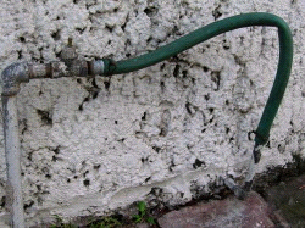Here in Mexico, there’s one term I hate to hear on a job site. No, it isn’t “oops.” It’s the term “mas o menos.” It is the Spanish term that literally translates to “more or less.”

Because of my experience as an engineer, I tend to think logically and see answers more in terms of black or white. I went through years of post secondary education understanding the world around us and how it works, and in most cases, variables won’t and constants aren’t. However, my professors — who were the masters of my universe at that time — did not give me partial marks for a result that was almost right. It was either right or wrong.
Now, when I am talking about “mas o menos,” I am not talking about the rustic style of work. To use an example of the rustic-style, let us think of “rustic” furniture; it is a style of furniture that allows for flaws, variations and imperfections that esthetically appear to be the result of handmade craftsmanship using hand tools rather than modern precision tools and finishes. A more modern form of furniture (as opposed to rustic) is built to be straight and orthogonal, presenting little to no imperfections and constructed to a level of tolerance and precision that provides a superior quality. Rustic furniture — although “rustic” — still functions well, is basically neat and is put together in a rational and robust manner. Rustic has an element of “mas o menos” however; it does not dominate the design of the furniture piece.
When I hear the term “mas o menos” on the job site, it perks up my ears and forces me to look further into the work completed. I have seen many examples in older, and even new houses, where this term has been applied. However, in some cases, the worker has missed the point as to how the design should be completed.
In a recent case, a plumber had been connecting a drain to a laundry scrub tub and, instead of connecting the base of the tub to the drain using the appropriate PVC connection, he had innovatively used the top third of a plastic two-litre bottle as the funnel-neck connection between the concrete tub and the white PVC drain pipe. Yes, it worked — “mas o menos.” But it would not last in the long-term and it was not an acceptable connection for the drain.
Another home I reviewed had a gas connection between the stationary gas tank and a new outdoor grill. The propane gas easily flowed to the new outdoor grill, so much so that the homeowners found they could not operate the grill at maximum, since the flames were too high and hot. Unfortunately, the “plumber” connected the new gas line for the grill, to the small section of pipe between the valve on the tank and the pressure regulator. Sure ,the gas flowed freely to the new grill and it functioned (mas o menos). However, the high-pressure gas flow rate was not moderated by the gas regulator. Also, the flexible plastic gas line connecting the gas grill to the tank had ruptured due to the high-pressure, which was well over the recommended pressure range for the flexible line. All the gas had leaked out of the 500-litre tank, which — fortunately — was located in a well-ventilated area high on the uppermost level of the roof. Before refilling the tank, I recommended removing and reconnecting a new gas line correctly (after the regulator) so the clients did not lose all the gas again and could actually used the outdoor grill safely without losing their eyebrows.
A classic case I reviewed a while back was a roof drain. The flat roof area of the year-old house had been sloped “mas o menos” to drain toward the northwest corner of the roof where a “scupper” type drain had been installed. During the last heavy rainfall, the problems with the roof became evident. The slope of the roof flattened out prior to the drain and allowed a large puddle to form on the roof, trapping water. When the gardener got up there and tried to sweep the water toward the drain, it was found that the drain was mounted incorrectly and too high. The water had to flow uphill to exit out of the drain. Unfortunately, the “mas o menos” workmanship, did not even function, much less function correctly.
So when you hear the terms “mas o menos” or “rústico” applied to someone’s workmanship, question what is the functionality or serviceability of the work completed. Some small imperfections that are are tolerable, but bad workmanship is not.

